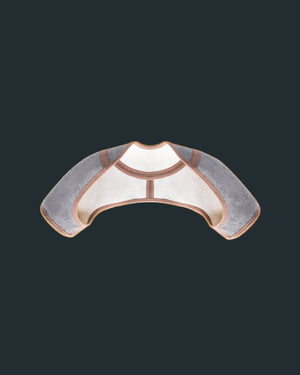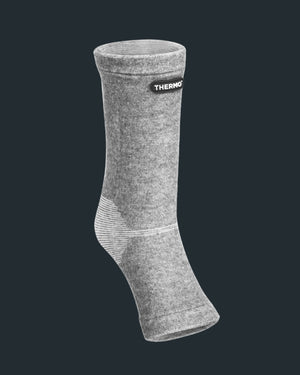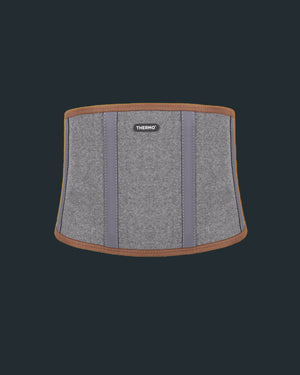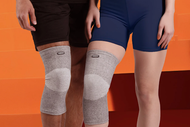If you play any sport or do any job that places too much pressure on the wrists, you're no stranger to chronic pain and potential swelling around your wrist joints...
If you play any sport or do any job that places too much pressure on the wrists, you're no stranger to chronic pain and potential swelling around your wrist joints.
A wrist compression sleeve can help relieve that pain and stabilize your wrists. It can also improve blood circulation and assist in muscle recovery—all thanks to the compression the sleeve provides.
Below, you’ll learn how these sleeves work and the features to look for when buying one. But first, let’s understand why our wrists are prone to injuries.
The Wrist: An Underrated Joint
The wrist joint and surrounding group of muscles help our hands be flexible, allowing them to move freely in our day-to-day. However, we often overlook them, resulting in overuse, especially during strenuous activities.
For example, gym goers might accidentally drop wrist workouts during their exercise. Or if they don’t, their gyms don’t have wrist-muscle-dedicated machines, forcing them to rely on dumbbells for wrist workouts. This could put further strain on the wrists.
Because of that, there’s a good chance that your wrist joint, including the muscles and tendons, are somewhat weaker than the rest of your arm.
This will make your wrist joint susceptible to injury, so support is necessary. Failure to do so can increase the risk of common wrist injuries, including but not limited to:
Note that by support, we don't solely mean compression; we also mean ensuring good blood circulation and adequate muscle recovery. Let’s elaborate.
How Compression Sleeves Can Support Your Wrists
A compression sleeve can support your wrist by providing stability, reducing pain, and improving proprioceptive sensation.
Using a wrist compression sleeve during your workout (or even simple, repetitive activities) can help brace your wrist and reduce the risk of injury. This can be useful to reduce the recurrence of wrist sprains.

Keep in mind that we’re saying “reduce the risk of injury,” not “prevent” injury from occuring. Awkward movements and continuous muscle fatigue without resting will lead to injury regardless of the type of wrist brace you wear.
That being said, here’s how a compression sleeve can support your wrist:
1. Better Wrist Stability
Your wrist joint can move in pretty much any direction, making it more susceptible to accidents and stretches. As such, some compression wrist sleeves act as braces around your wrists.
The added stability reduces the risk of overly extending your wrist in an awkward direction, potentially reducing the risk of injury.
2. Joint Proprioceptive Sensation
Your mind tends to have more sensation of a body joint when it’s wrapped in a compression sleeve.
This proprioceptive sensation allows you to focus more on the joint, enough to ensure you don’t overstretch it dangerously.
3. Reduced Pain
Some compression sleeves can help retain body heat in the wrist area, which can improve flexibility and the range of motion.
This warmth can also provide relief from stiffness and discomfort associated with conditions like arthritis or tendonitis.
According to a 2022 study conducted at the University of Missouri, Columbia, wrist support can be therapeutic for chronic wrist pain.
What to Look for in a Wrist Compression Sleeve
Not all compression sleeves provide the same function, which is why you should understand the type of pain or need you have before using a compression sleeve. Let’s provide a few examples:
Arthritis
Arthritis is a condition that causes tenderness and/or swelling in one or more joints of the body. If you’re aware that the pain you have in your wrist is because of arthritis, you’ll need a compression sleeve that can provide heat retention and inflammation relief.
Be careful not to wrap the sleeve too tightly around your wrist to prevent blood flow restriction, which could potentially worsen the case.
Carpal Tunnel Syndrome
CTS causes pressure on your wrist nerves, resulting in numbness, tingling, and potential pain in your wrist. As such, you should steer away from overly compressive sleeves to avoid worsening the case.

Instead, go for a compression sleeve that focuses more on heat retention and stabilization.
Tendonitis
Chronically inflamed tendons result in a condition known as tendonitis. An inflamed tendon causes discomfort, which can develop into pain or swelling while working out.
A compression sleeve that offers heat retention can improve blood supply and potentially reduce pain. Further, a bracing compression sleeve can minimize the stretching of the wrist tendons, giving better recovery chances.
Is Wearing Wrist Compression Sleeves Enough?
Not always. Compression sleeves are great for reducing the risk of injury and relieving pain during workouts, but you should also keep the post-workout period in mind when soreness and pain are at their most.
Allowing your body to recover properly will improve muscle healing and enhance recovery of the wrist-surrounding structures.
There are multiple ways to do so, like physical therapy, massages, ice baths, and stretching. However, you can recover while relaxing using recovery wear.
A notable example of such recovery wear is the Thermo™ Lite Recovery Wrist Sleeve. This isn’t a compressive sleeve that will brace your wrist during workouts. It’s a therapeutic one that’ll help you heal. When you’re resting while wearing it, you’ll benefit from:
- Improved blood flow
- Reduced pain (by up to 62%)
- Antibacterial effects
- Deodorizing effects
- High comfort that allows you to wear the sleeve for extended hours
FAQs
Will a Compression Sleeve Prevent Wrist Injury?
No, unless you’re wearing special bands with an immobilization mechanism, no wristband or sleeve can prevent injury resulting from awkward movements or excessive trauma.
However, a compressive sleeve can reduce the risk of injury while working out. Additionally, the Thermo™ Lite Recovery Wrist Sleeve can improve recovery and blood flow between exercises and minimize pain.
Can I Wear the Thermo™ Lite Recovery Wrist Sleeve While Working Out?
As long as your workout doesn’t involve rigorous movements, you can wear the Thermo™ Lite Recovery Wrist Sleeve. However, if your workout is heavy, wearing the sleeve becomes unhelpful, as it’s not a compression wrist sleeve and won’t provide a proprioceptive sensation of the joint. Opt for a compression sleeve instead.
What Type of Sleeve Can I Wear on a Fractured Wrist?
As long as your doctor doesn’t say otherwise, the Thermo Wrist Sleeve is actually indicated for wrist fractures as long as no severe bone dislocation is present (in which case a cast is needed).
Don’t wear compression sleeves on fractured wrists, as they may lead to blood constriction, tingling, and increased pain. Their function is at its best only during workouts.
In a Nutshell
Wrist compression sleeves give you a better sensation of your joints, which you can then use to adjust your movements and prevent the injury yourself. They can also brace your wrist and improve blood flow during workouts.
However, if you already have an injury or pain resulting from a trauma, disease, or syndrome, you don't need compression sleeves; you need recovery-focused ones.
Our specialized garments, like the Thermo™ Lite Recovery Wrist Sleeve, can provide pain relief around your ankles, knees, waist, shoulders, and elbows.
Browse our shop to get a complete look at our products, and contact us if you have any questions.
Sources
- Sprained Wrist | Cleveland Clinic logo
- Golfer's Elbow | Mayo Clinic
- Lateral Epicondylitis | Johns Hopkins Medicine
- Wrist Support Does Not Prevent Wrist Injury or Pain but May Be Therapeutic for Existing Wrist Pain in Female Gymnasts | Gavin Publishers
- Arthritis | Mayo Clinic
- Carpal Tunnel Syndrome | National Health Service (NHS)
- Tendonitis | Johns Hopkins Medicine






